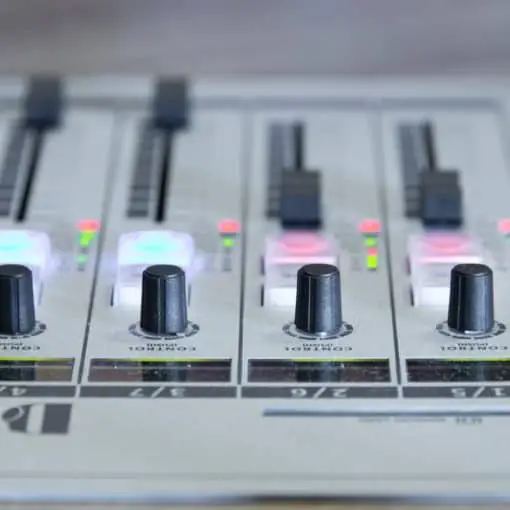Starting a ham radio conversation can be exciting for newcomers. There’s a unique thrill in connecting with fellow radio enthusiasts, learning new things, and experiencing the joy of clear communication.
To begin, always start with a brief introduction that includes your call sign and name. This helps the other person know who they are talking to and ensures a smooth start to your dialogue.

Once you’ve introduced yourself, proceed to share your location, the signal report, and a brief summary of your setup.
For example, you might say, “This is M1ABC, located in New York, with a clear signal on my new transceiver.”
This simple framework sets the stage for a friendly and effective exchange. Remember that ham radio conversations often follow certain etiquette, making your communications both respectful and enjoyable.
Key Takeaways
- Introduce yourself with your call sign and name.
- Share your location, signal report, and setup.
- Always listen first and help others when needed.
Getting Started with Ham Radio Conversations
Starting a conversation on ham radio involves knowledge of the basics, setting up your station properly, understanding communication protocols, and making your first contact. These steps are crucial for clear and effective communication.
Understanding the Basics
Ham radio, also known as amateur radio, allows licensed operators to communicate over various frequencies.
Licenses come in several classes: Technician, General, and Extra, each granting different frequency privileges.
Operators use equipment like a transceiver, which combines a transmitter and receiver, to send and receive signals.
It’s important to understand terms like CQ (calling any station), QSO (a conversation), and call sign (your unique identifier).
Setting Up Your Station
Setting up a ham radio station requires various pieces of equipment.
A transceiver is essential, and it is typically paired with a microphone for voice communication.
An antenna is crucial for transmitting and receiving signals—make sure it’s correctly positioned for optimal performance.
Additional items include an antenna tuner to match the antenna impedance, a power supply to provide adequate power to the equipment, and possibly a receiver incremental tuning (RIT) for fine-tuning the received signal.
The quality of your setup will significantly impact your ability to communicate effectively.
Mastering Communication Protocols
Effective communication in ham radio relies heavily on adhering to established protocols and etiquette.
Operators often start a call with “CQ” to invite others to communicate.
It’s important to give a signal report using the RST system (Readability, Signal Strength, and Tone) to help others gauge their signal quality.
Many operators use the phonetic alphabet (e.g., Alpha, Bravo, Charlie) to ensure clarity, especially in poor signal conditions.
Learning ham etiquette such as waiting for a clear frequency and identifying yourself regularly with your call sign is crucial.
Making Your First Contact
To make your first contact, listen to ongoing conversations to understand common practices.
Choose a frequency, and make sure it’s unused by asking, “Is this frequency in use?”
If no one responds, you can call “CQ” and then state your call sign.
When another station returns your call, exchange basic information like signal reports and locations.
Keep initial contacts short and to the point, focusing on practicing and gaining confidence.
If you prefer not to call CQ, you can join an ongoing QSO by waiting for a break in the conversation and introducing yourself.
Advanced Ham Radio Communication Techniques
These techniques help ham radio operators enhance their communication skills and engage with a broader community. Look into exploring various modes and frequencies, improving communication skills, and engaging with the global ham community.
Exploring Different Modes and Frequencies
Advanced ham operators should become familiar with different modes such as AM, FM, SSB, and CW. Each mode has unique benefits.
For example, SSB (Single Side Band) allows for more efficient use of power and bandwidth compared to AM. In contrast, CW (Morse Code) is excellent for weak signal work.
Exploring digital modes like RTTY and PSK31 can also enhance communication.
VHF and UHF bands might be less crowded and offer opportunities for satellite communications.
It’s crucial to monitor band conditions and understand radio propagation to choose the best frequencies for effective communication.
Improving Communication Skills
Effective communication on ham radio requires following proper protocols.
Operators need to identify themselves with their call sign and do so every ten minutes, as required by the FCC.
Learn to use features like RIT (Receiver Incremental Tuning) to fine-tune reception.
Understanding Q-codes like QRM (interference) and QRN (static) helps in managing communication clarity.
Operators should practice using voice modes and digital modes properly.
Engaging in regular net operations and handling emergency traffic drills can significantly improve skills.
Using languages like English, French, and Spanish can help in connecting with more operators globally.
Engaging with the Global Ham Community
Connecting with the global ham community can be enriching.
Participating in DXing (long-distance communication) allows operators to talk to people worldwide.
Join ham radio clubs focusing on different activities like sports or socializing.
Learning about operators from different cultures and regions enhances the global experience.
Operators can also engage through group communications or private conversations.
Using repeaters helps extend the communication range.
Being active on contests and awards programs can provide more opportunities for interaction.
Ending conversations with friendly radio etiquette such as saying 73s (best regards) can be a nice touch.
Explore platforms where ham enthusiasts gather and share knowledge, like online forums or local club meetings, to stay informed and enhance your skills.
Frequently Asked Questions
Starting a ham radio conversation can be straightforward if you know the right protocols, phrases, and steps. This section provides clear answers to common questions about initiating, conducting, and concluding ham radio communications.
What are the standard protocols for initiating a ham radio conversation?
When starting a conversation, it is essential to listen first. This ensures you don’t interrupt an ongoing transmission.
Announce your call sign clearly and wait for a response. For example, you might say, “This is W1AW, listening.”
What phrases or codes are commonly used when calling a specific station on ham radio?
Ham radio operators use specific phrases to ensure clarity.
When calling a station, use their call sign followed by yours. For instance, “K5XYZ, this is N1ABC.”
It’s important to use the phonetic alphabet to avoid misunderstandings, such as saying, “Alpha Bravo Charlie” instead of “ABC.”
How does one properly conclude a communication session on ham radio?
To end a conversation, politely signal your intent to end the transmission.
A common phrase is, “This is N1ABC, clear.” Additionally, you may use the number “73,” which means “best regards,” as a friendly sign-off before stating you are clear.
Can you provide examples of typical ham radio conversations for beginners?
A basic exchange might start with an introduction: “This is N1ABC. How do you copy?”
A response could be, “This is K5XYZ. I hear you loud and clear.”
The conversation might include signal reports, weather updates, or equipment discussions to maintain a friendly and informative dialogue.
What do numerical codes like ’73’ signify in ham radio communications?
Codes like “73” have specific meanings in ham radio. “73” means “best regards,” while “88” signifies “love and kisses.”
These codes are used to keep messages succinct and courteous, enhancing clarity and efficiency during conversations.
What steps should I follow to join an ongoing discussion on a ham radio frequency?
To join an ongoing discussion, listen first to understand the conversation.
Identify a break, then clearly state your call sign, like “N1ABC.”
Wait to be acknowledged before speaking further. This respectful approach ensures you enter the conversation smoothly and without disruption.





